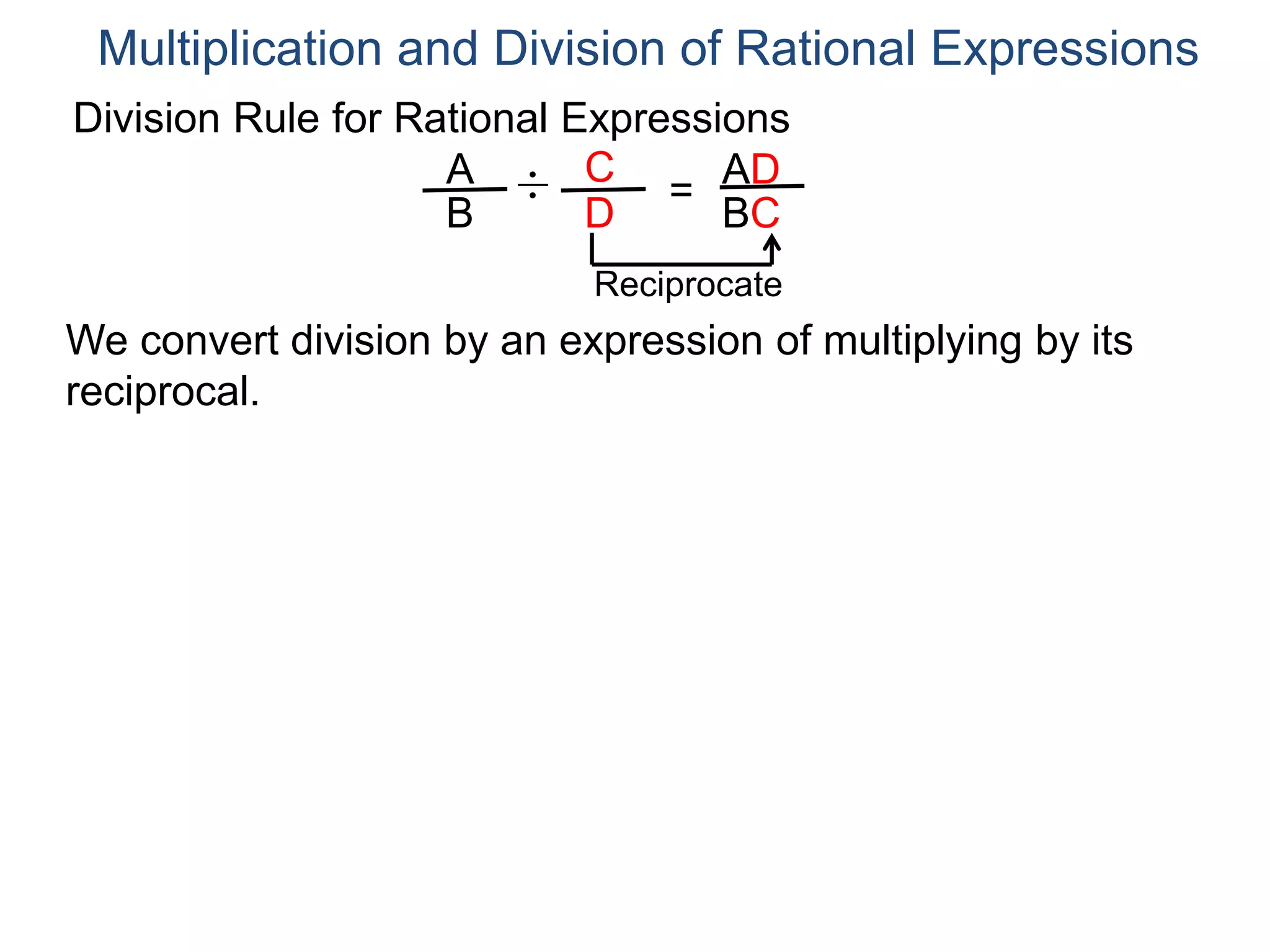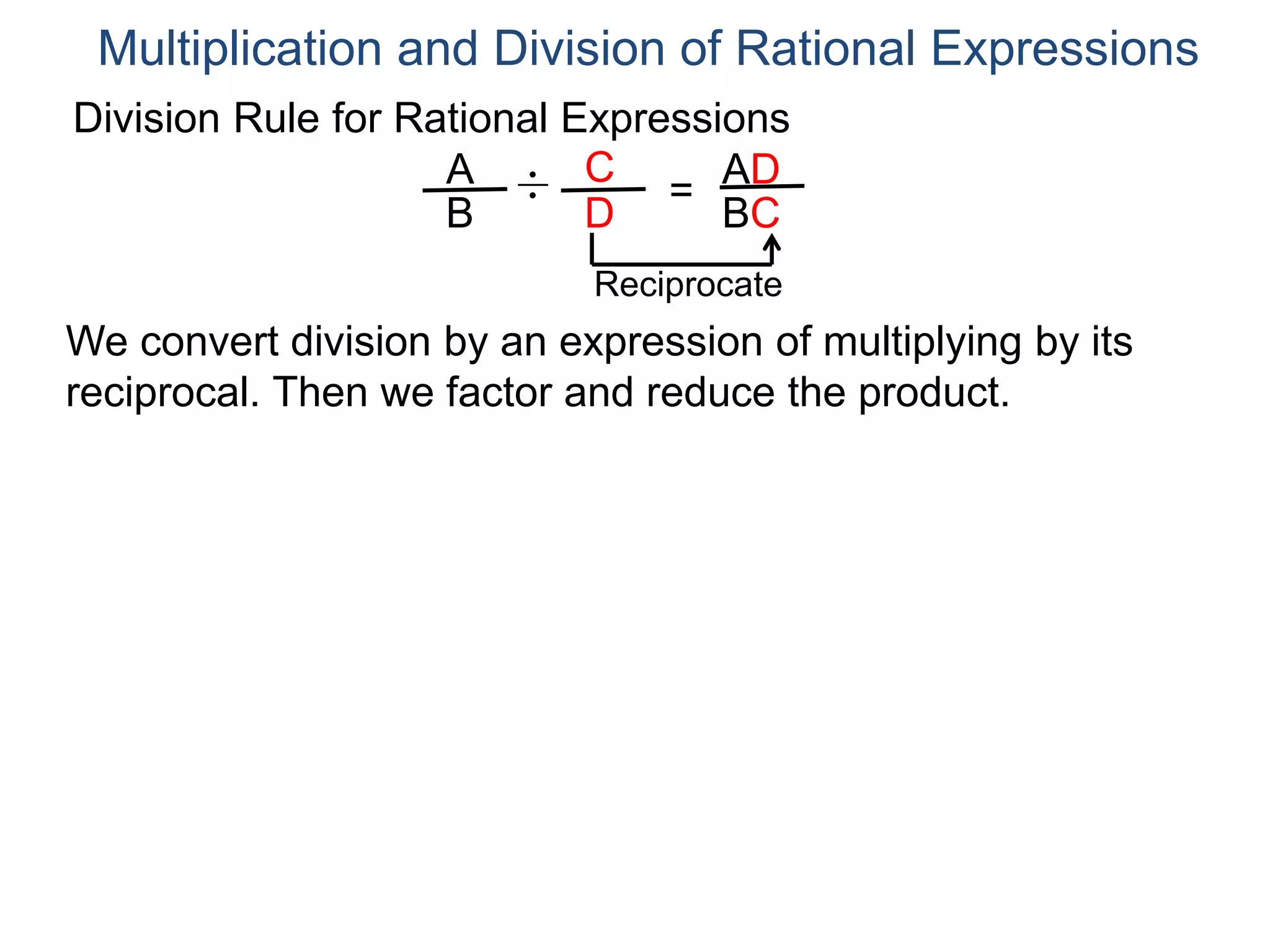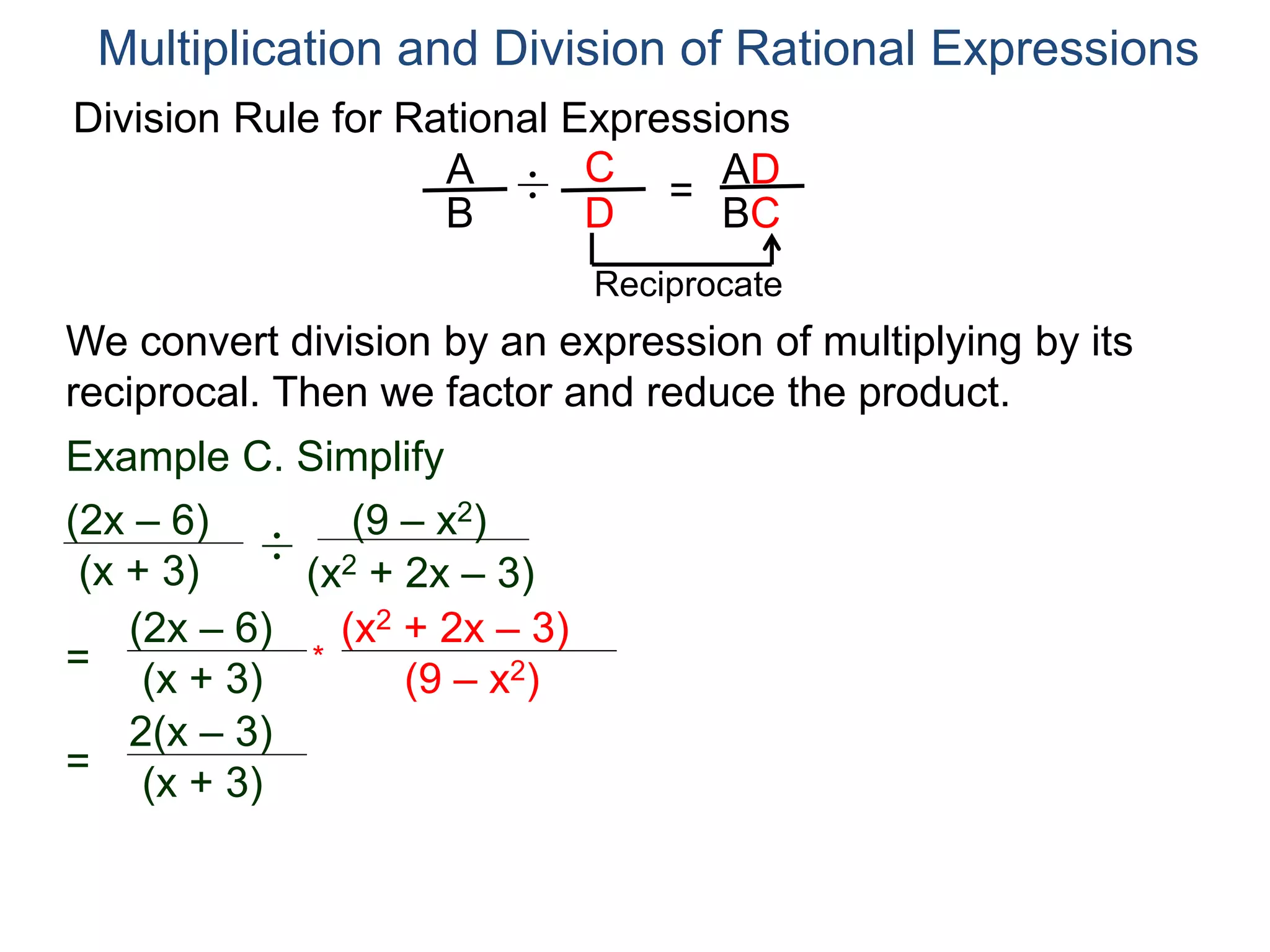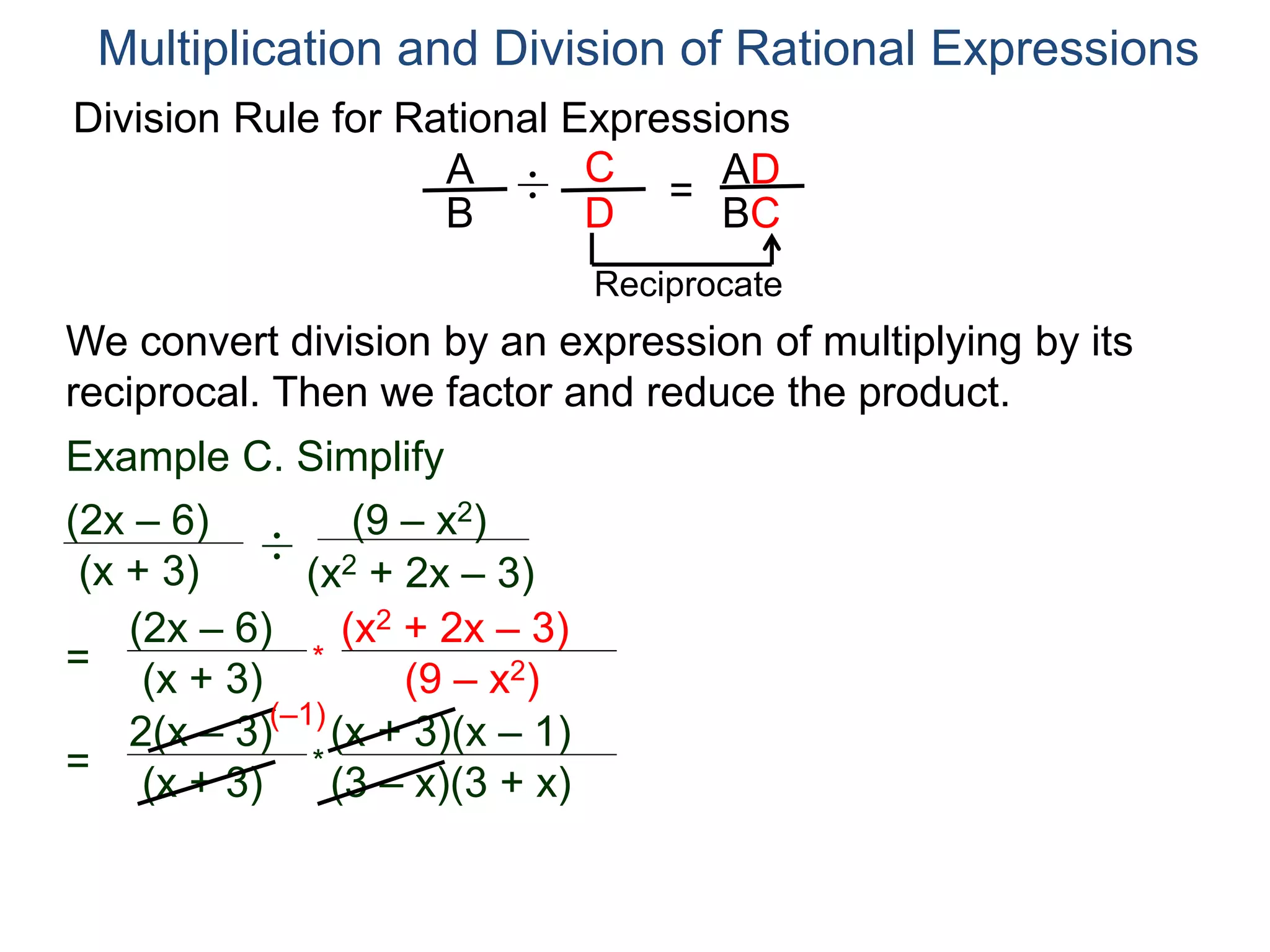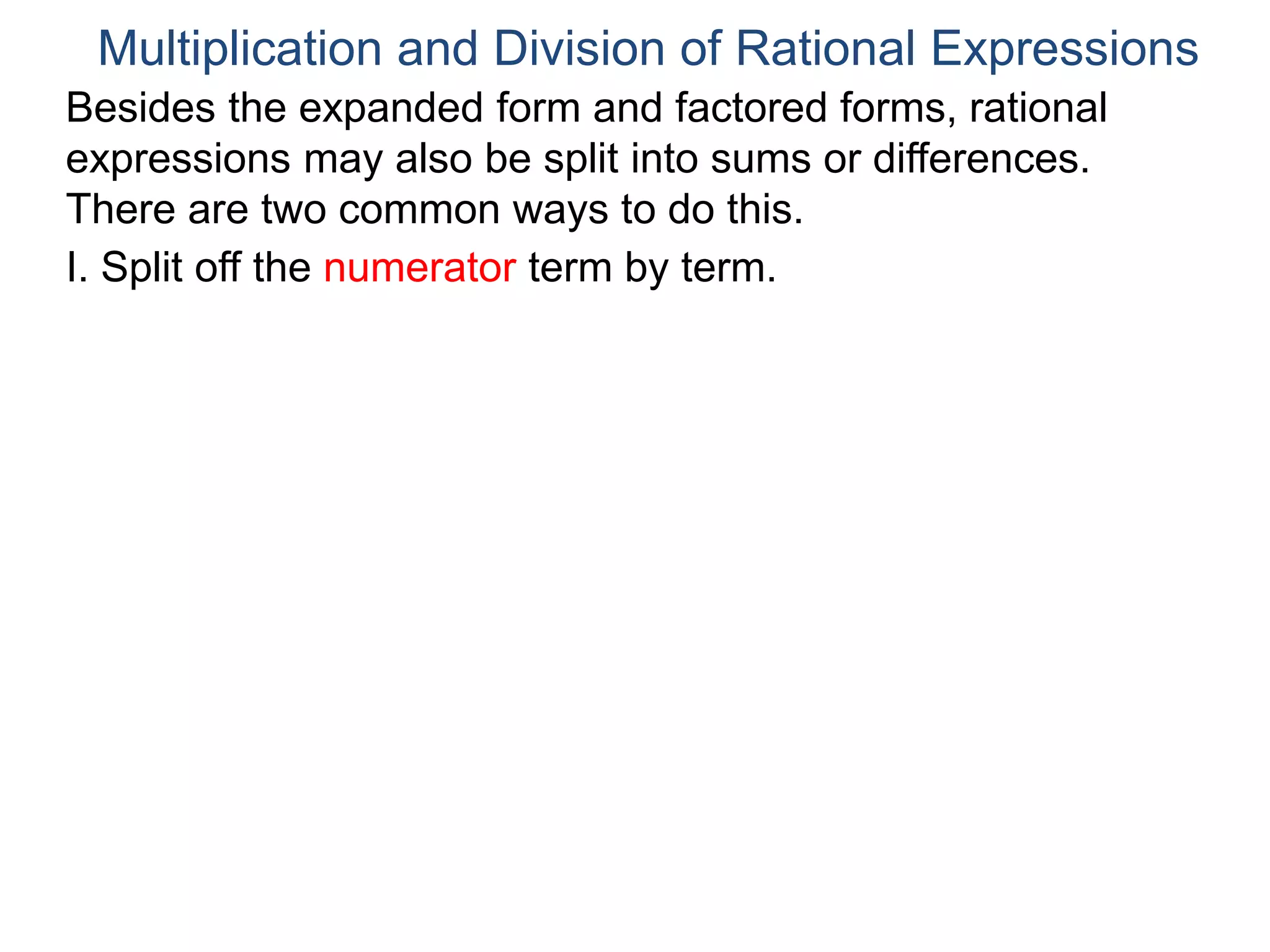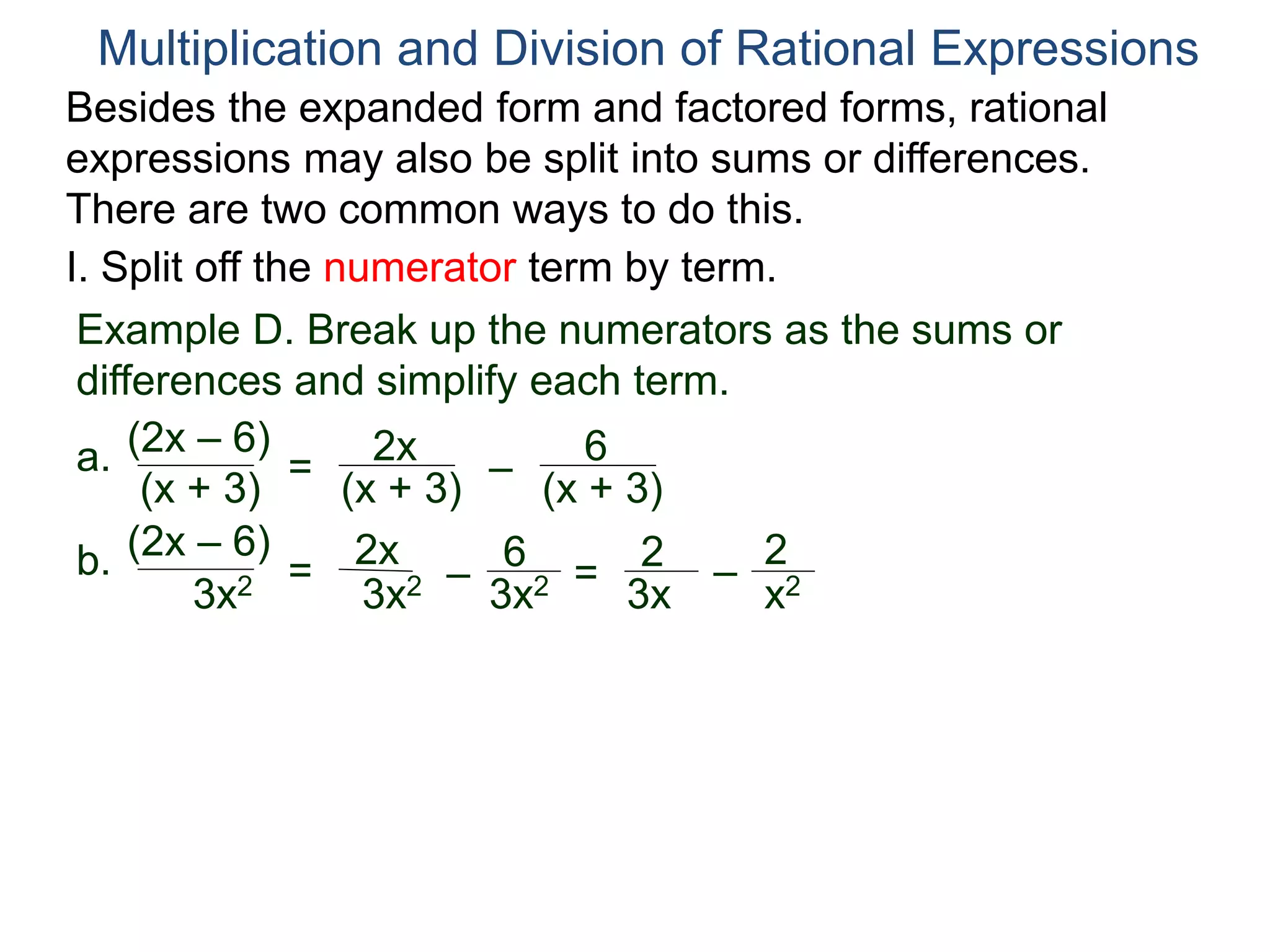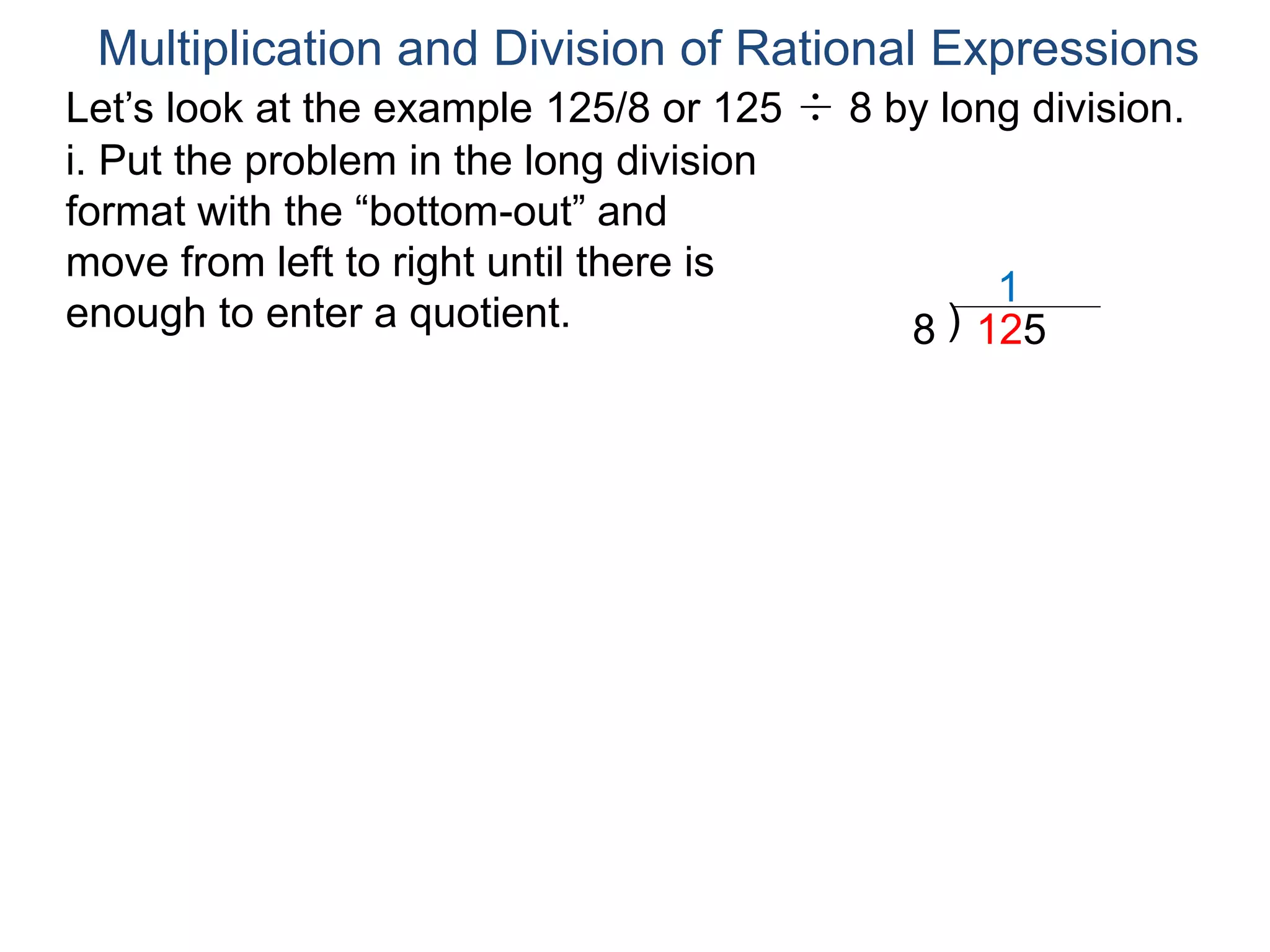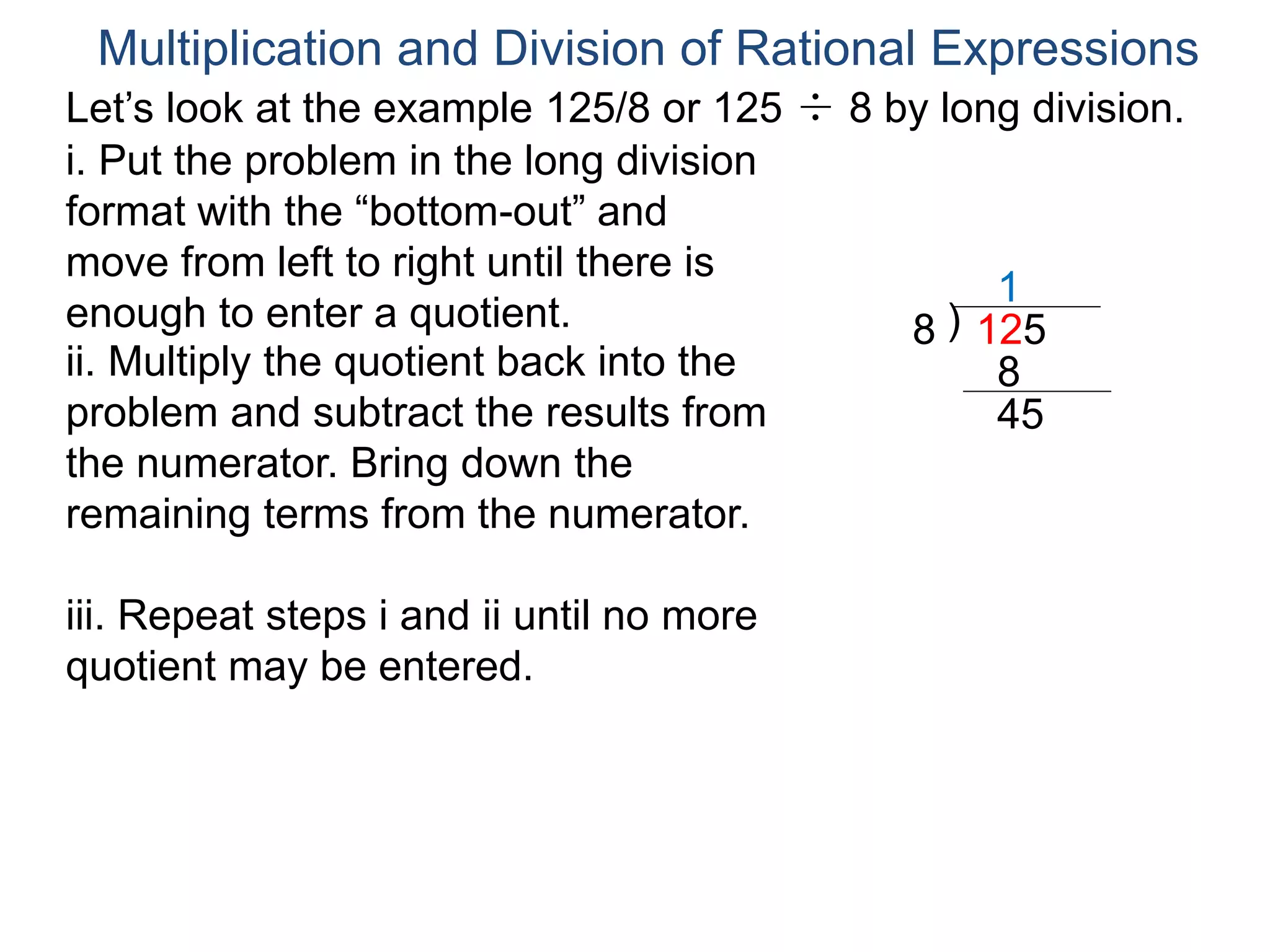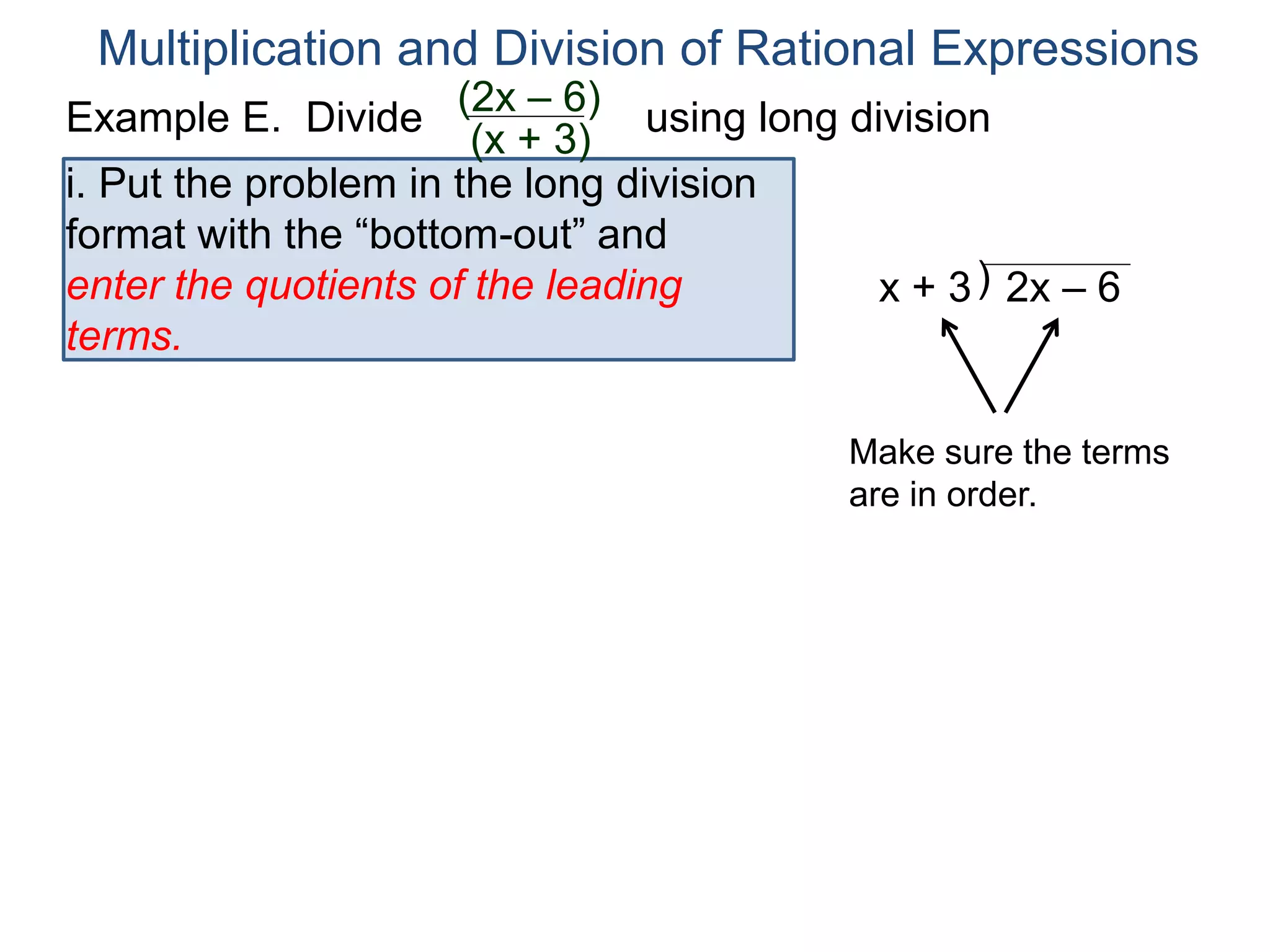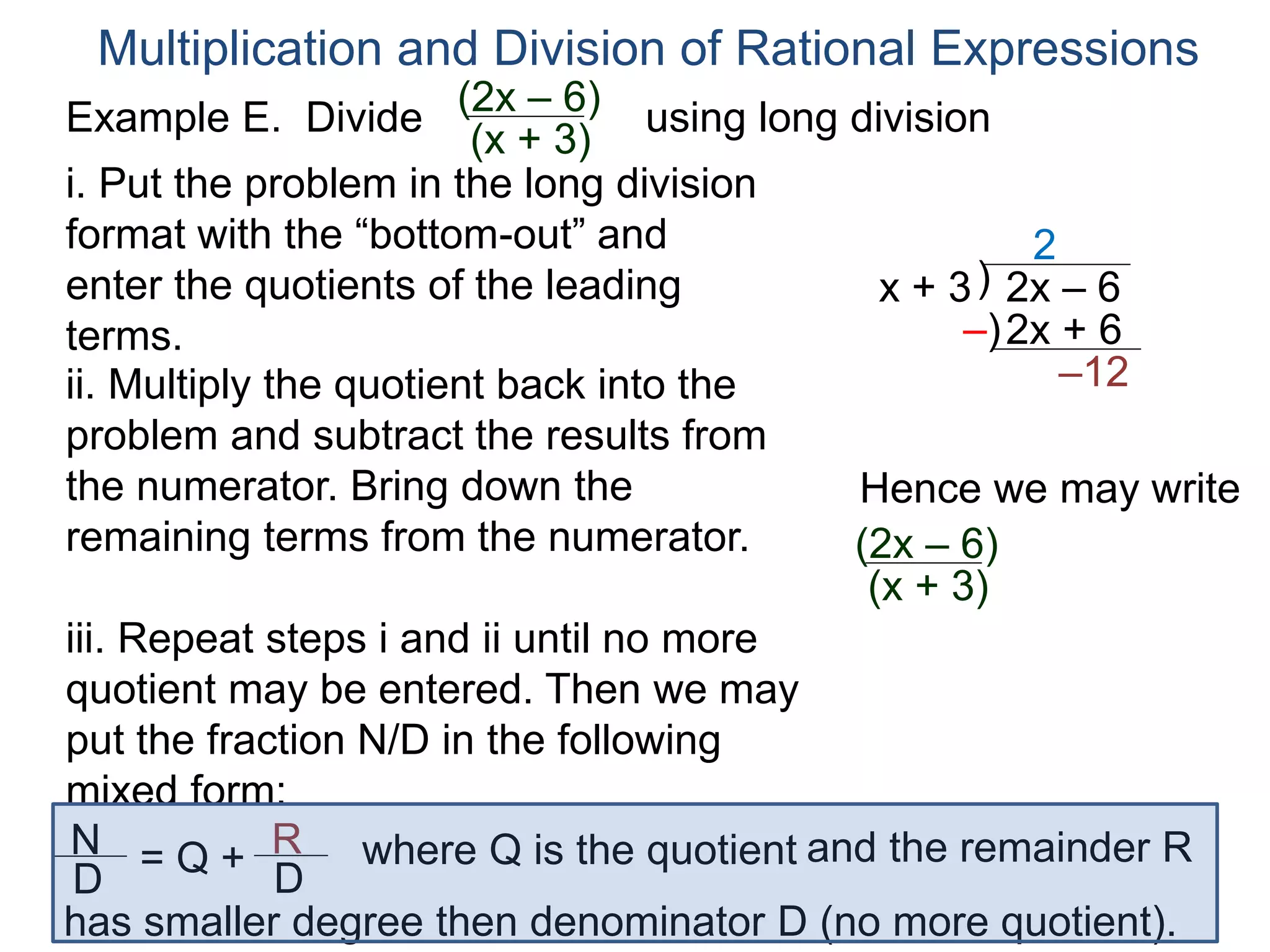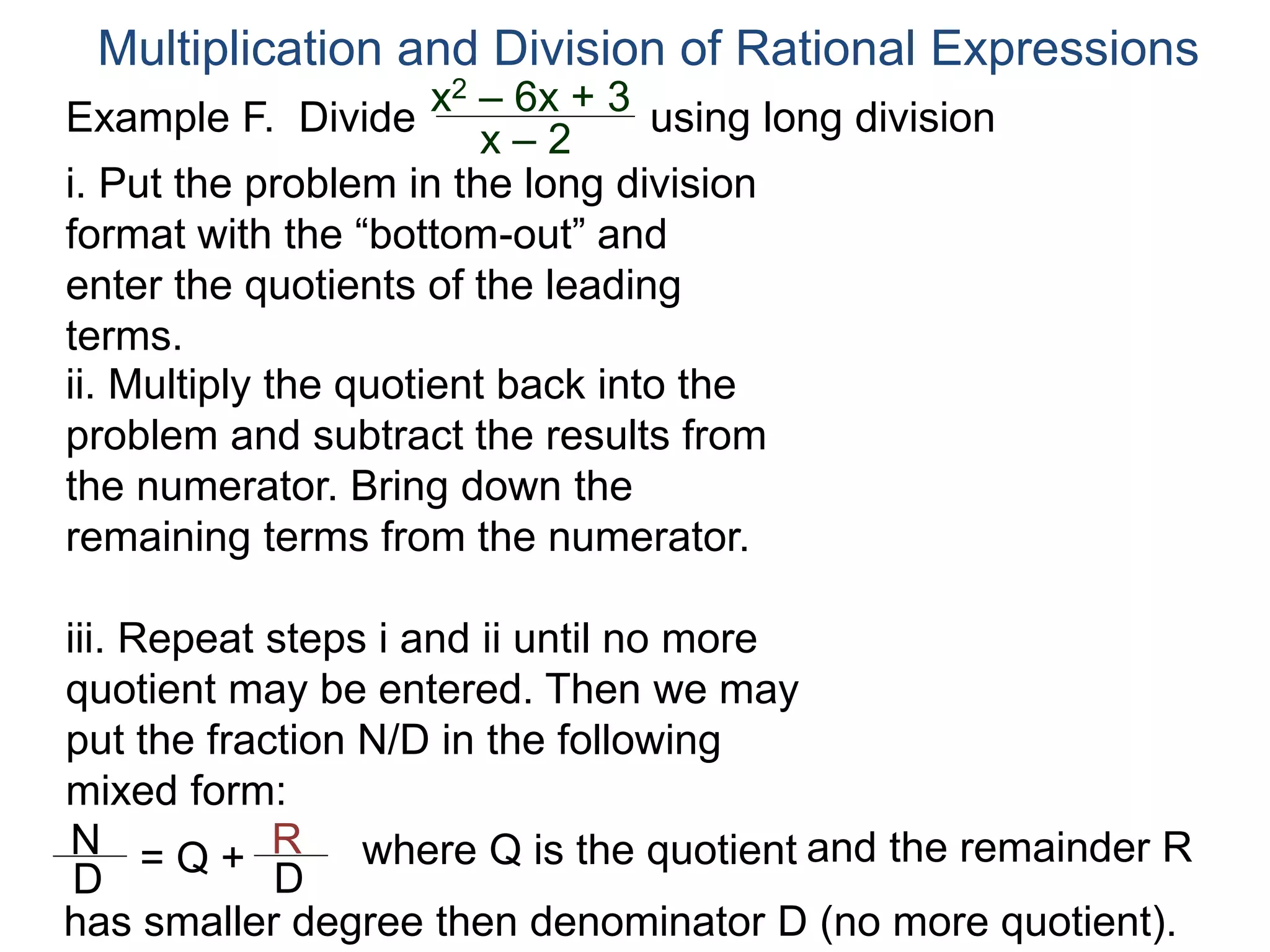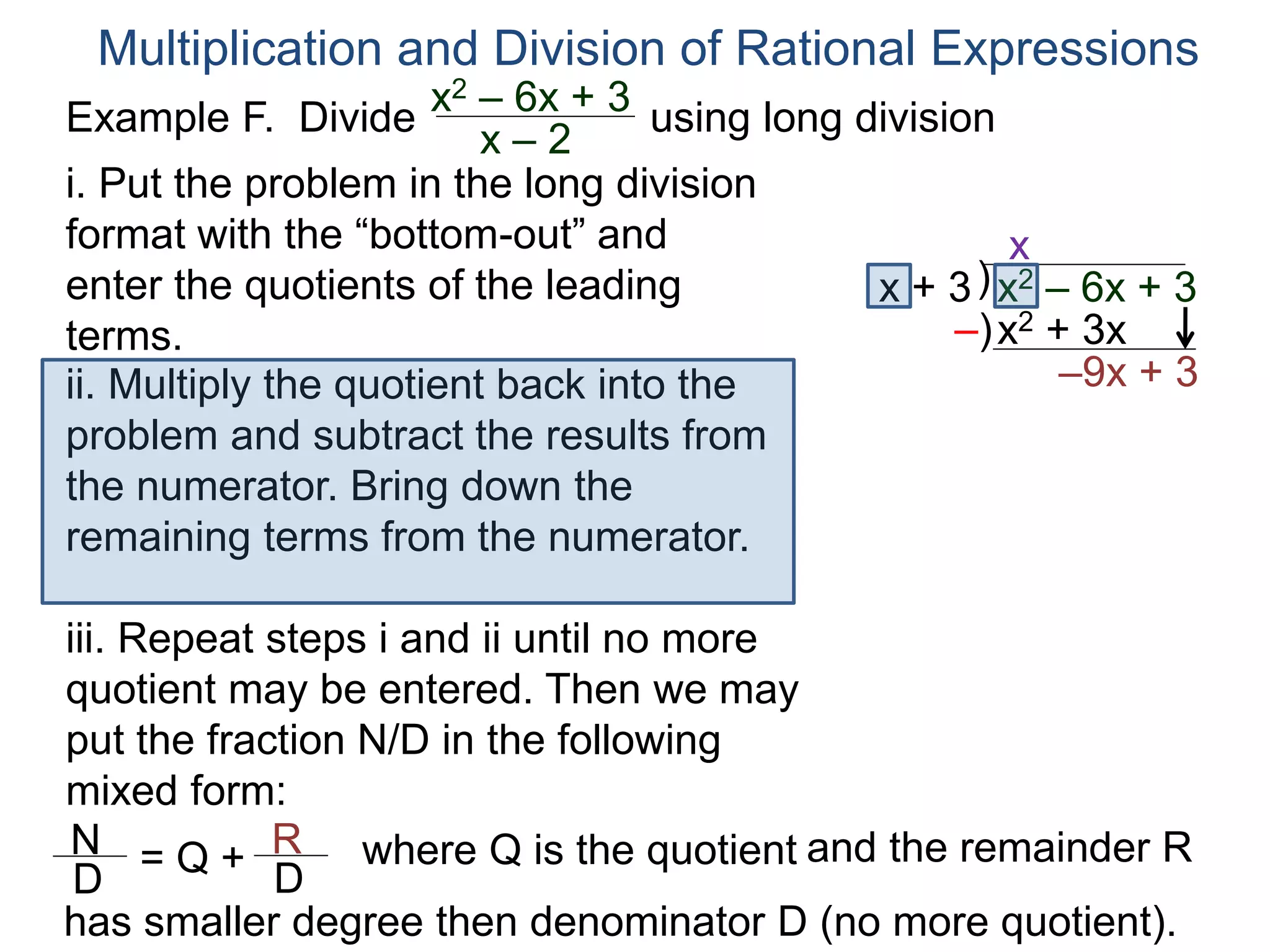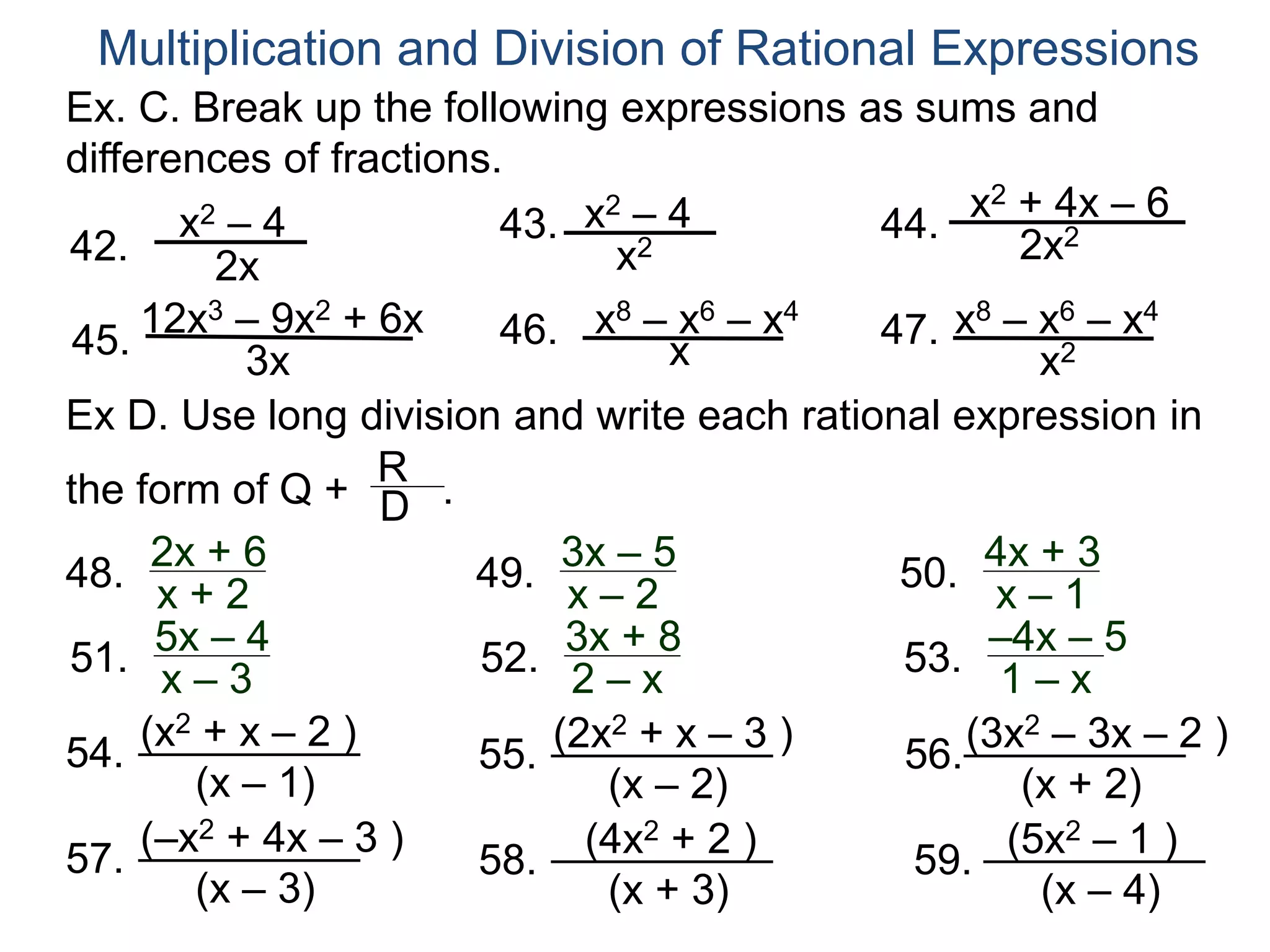The document discusses multiplication and division of rational expressions. It presents the multiplication rule for rational expressions, which states that the product of two rational expressions is equal to the product of the tops divided by the product of the bottoms. Examples are provided to demonstrate simplifying rational expression products by factoring and canceling like terms.



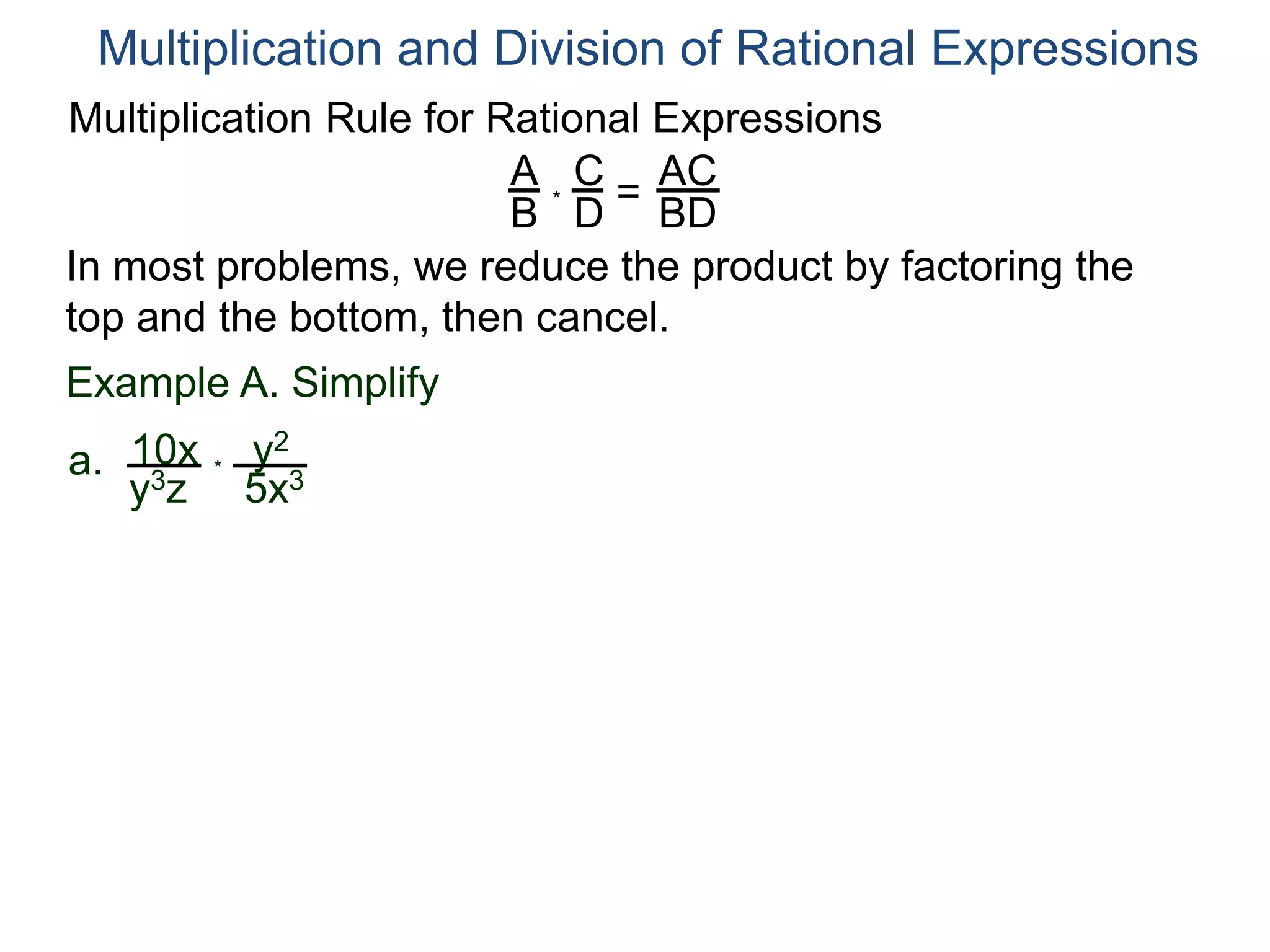
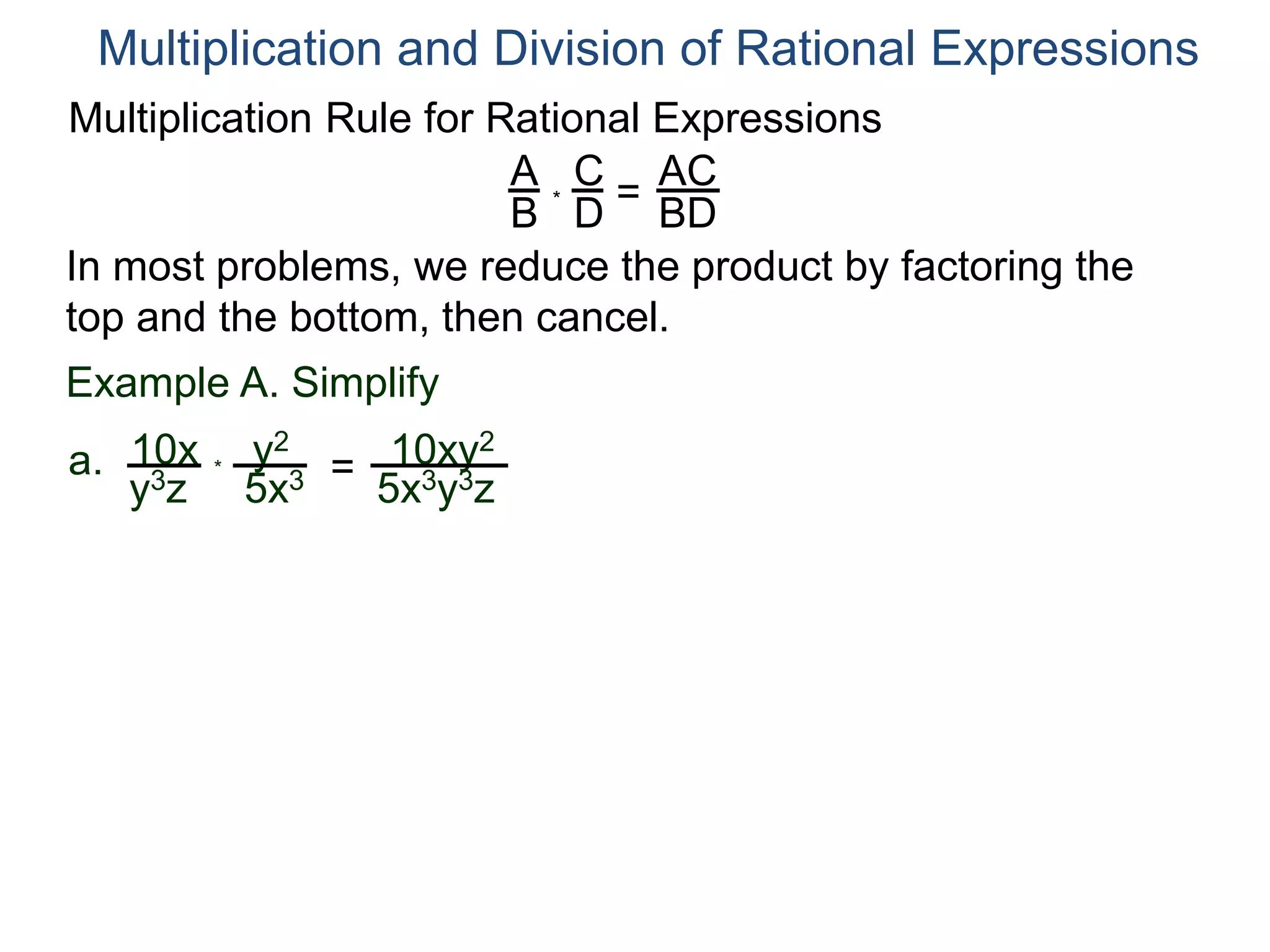



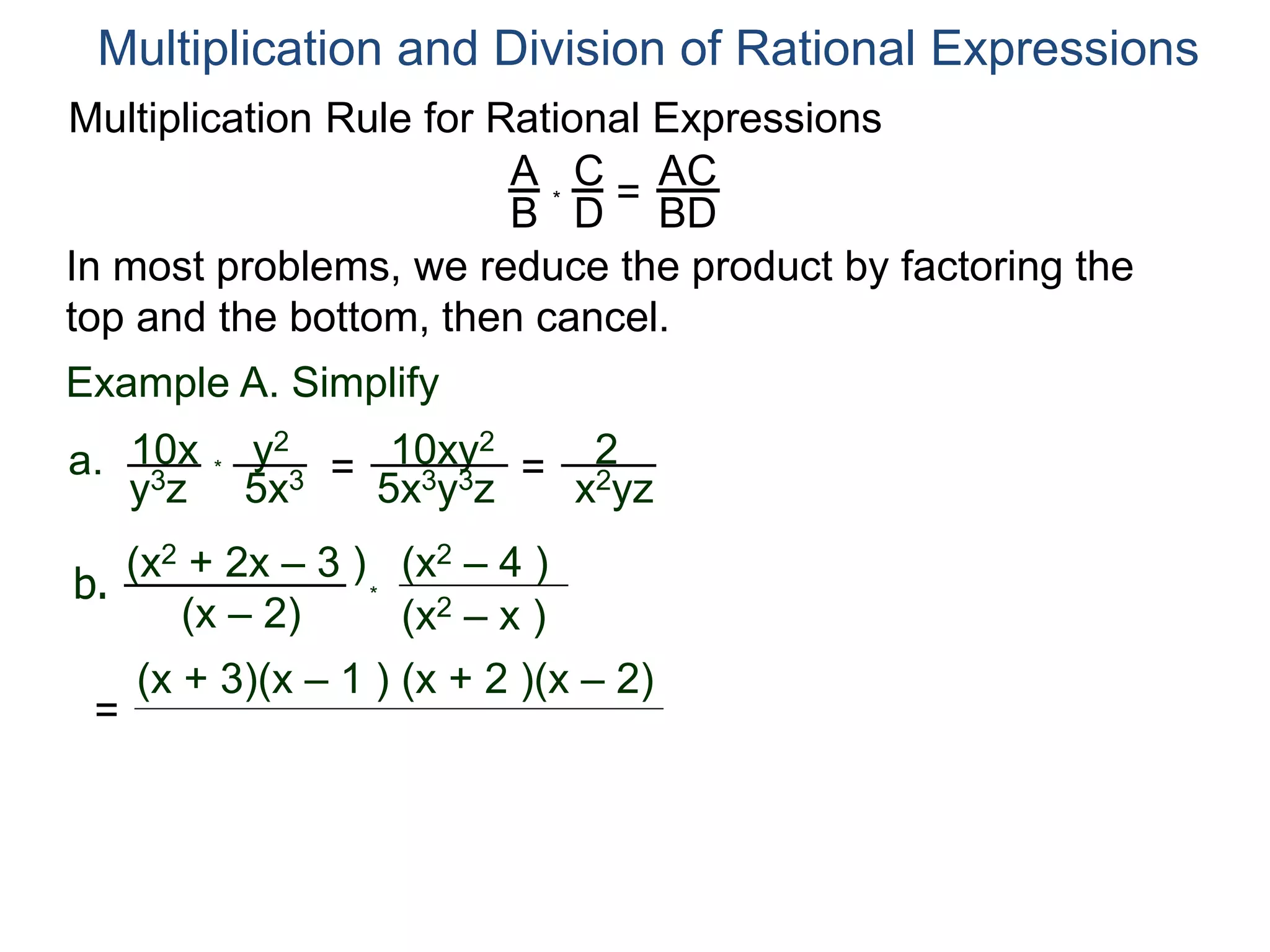









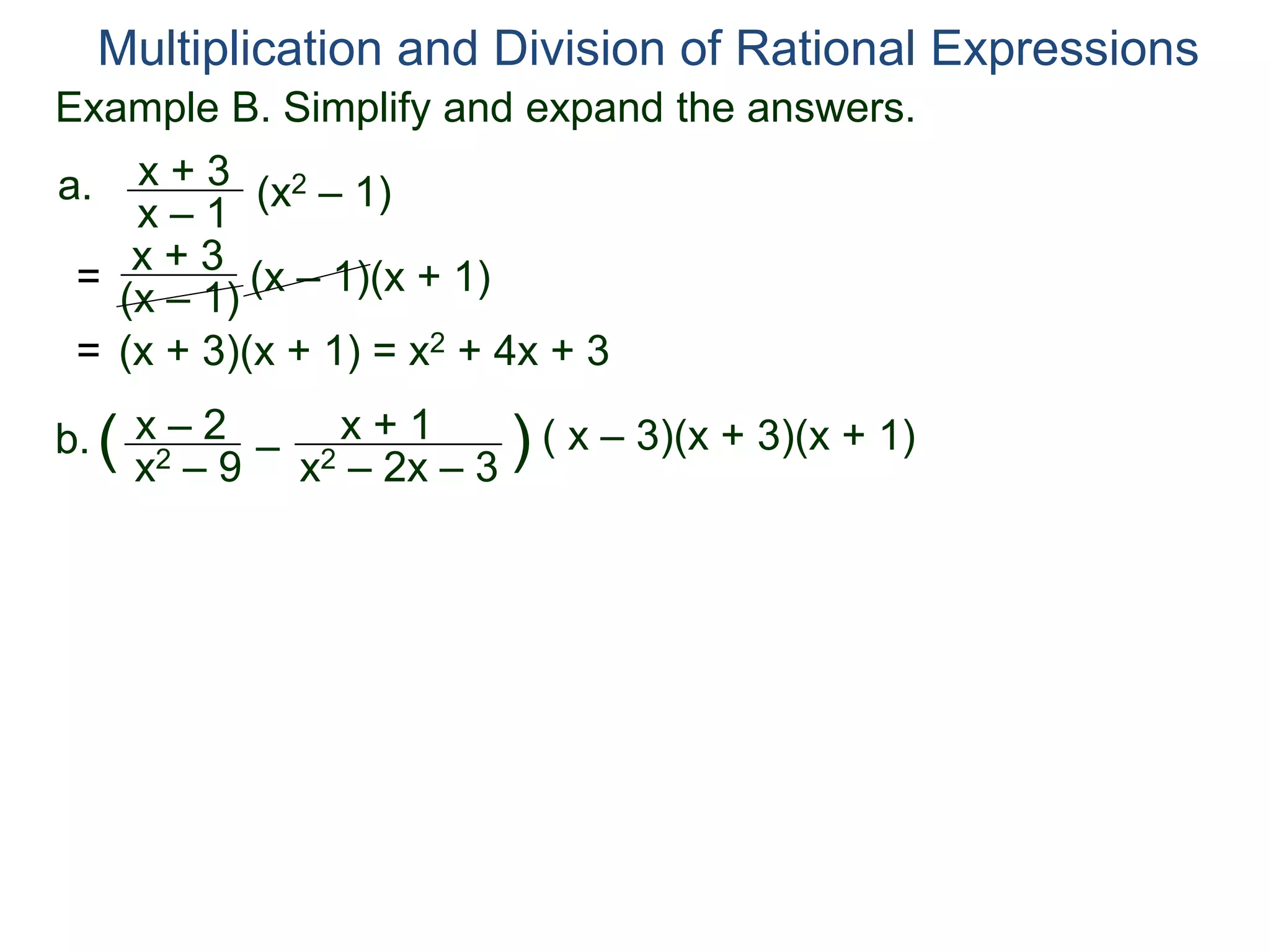


![Multiplication and Division of Rational Expressions
a. x + 3
x – 1
(x2 – 1)
= x + 3
(x – 1) (x – 1)(x + 1)
= (x + 3)(x + 1) = x2 + 4x + 3
b. x – 2
x2 – 9
( –
x + 1
x2 – 2x – 3
) ( x – 3)(x + 3)(x + 1)
=
x – 2
(x – 3)(x + 3)
[ –
x + 1
(x – 3)(x + 1)
] ( x – 3)(x + 3)(x + 1)
Example B. Simplify and expand the answers.](https://image.slidesharecdn.com/53multiplicationanddivisionofrationalexpressions-160125043450/75/53-multiplication-and-division-of-rational-expressions-22-2048.jpg)
![Multiplication and Division of Rational Expressions
a. x + 3
x – 1
(x2 – 1)
= x + 3
(x – 1) (x – 1)(x + 1)
= (x + 3)(x + 1) = x2 + 4x + 3
b. x – 2
x2 – 9
( –
x + 1
x2 – 2x – 3
) ( x – 3)(x + 3)(x + 1)
=
x – 2
(x – 3)(x + 3)
[ –
x + 1
(x – 3)(x + 1)
] ( x – 3)(x + 3)(x + 1)
(x + 1)
Example B. Simplify and expand the answers.](https://image.slidesharecdn.com/53multiplicationanddivisionofrationalexpressions-160125043450/75/53-multiplication-and-division-of-rational-expressions-23-2048.jpg)
![Multiplication and Division of Rational Expressions
a. x + 3
x – 1
(x2 – 1)
= x + 3
(x – 1) (x – 1)(x + 1)
= (x + 3)(x + 1) = x2 + 4x + 3
b. x – 2
x2 – 9
( –
x + 1
x2 – 2x – 3
) ( x – 3)(x + 3)(x + 1)
=
x – 2
(x – 3)(x + 3)
[ –
x + 1
(x – 3)(x + 1)
] ( x – 3)(x + 3)(x + 1)
(x + 1) (x + 3)
Example B. Simplify and expand the answers.](https://image.slidesharecdn.com/53multiplicationanddivisionofrationalexpressions-160125043450/75/53-multiplication-and-division-of-rational-expressions-24-2048.jpg)
![Multiplication and Division of Rational Expressions
a. x + 3
x – 1
(x2 – 1)
= x + 3
(x – 1) (x – 1)(x + 1)
= (x + 3)(x + 1) = x2 + 4x + 3
b. x – 2
x2 – 9
( –
x + 1
x2 – 2x – 3
) ( x – 3)(x + 3)(x + 1)
=
x – 2
(x – 3)(x + 3)
[ –
x + 1
(x – 3)(x + 1)
] ( x – 3)(x + 3)(x + 1)
(x + 1) (x + 3)
= (x – 2)(x + 1) – (x + 1)(x + 3)
Example B. Simplify and expand the answers.](https://image.slidesharecdn.com/53multiplicationanddivisionofrationalexpressions-160125043450/75/53-multiplication-and-division-of-rational-expressions-25-2048.jpg)
![Multiplication and Division of Rational Expressions
a. x + 3
x – 1
(x2 – 1)
= x + 3
(x – 1) (x – 1)(x + 1)
= (x + 3)(x + 1) = x2 + 4x + 3
b. x – 2
x2 – 9
( –
x + 1
x2 – 2x – 3
) ( x – 3)(x + 3)(x + 1)
=
x – 2
(x – 3)(x + 3)
[ –
x + 1
(x – 3)(x + 1)
] ( x – 3)(x + 3)(x + 1)
(x + 1) (x + 3)
= (x – 2)(x + 1) – (x + 1)(x + 3)
= (x – 2)(x + 1) + (–x –1)(x + 3)
Example B. Simplify and expand the answers.](https://image.slidesharecdn.com/53multiplicationanddivisionofrationalexpressions-160125043450/75/53-multiplication-and-division-of-rational-expressions-26-2048.jpg)
![Multiplication and Division of Rational Expressions
a. x + 3
x – 1
(x2 – 1)
= x + 3
(x – 1) (x – 1)(x + 1)
= (x + 3)(x + 1) = x2 + 4x + 3
b. x – 2
x2 – 9
( –
x + 1
x2 – 2x – 3
) ( x – 3)(x + 3)(x + 1)
=
x – 2
(x – 3)(x + 3)
[ –
x + 1
(x – 3)(x + 1)
] ( x – 3)(x + 3)(x + 1)
(x + 1) (x + 3)
= (x – 2)(x + 1) – (x + 1)(x + 3)
= (x – 2)(x + 1) + (–x –1)(x + 3)
= x2 – x – 2 – x2 – 4x – 3
Example B. Simplify and expand the answers.](https://image.slidesharecdn.com/53multiplicationanddivisionofrationalexpressions-160125043450/75/53-multiplication-and-division-of-rational-expressions-27-2048.jpg)
![Multiplication and Division of Rational Expressions
Example B. Simplify and expand the answers.
a. x + 3
x – 1
(x2 – 1)
= x + 3
(x – 1) (x – 1)(x + 1)
= (x + 3)(x + 1) = x2 + 4x + 3
b. x – 2
x2 – 9
( –
x + 1
x2 – 2x – 3
) ( x – 3)(x + 3)(x + 1)
=
x – 2
(x – 3)(x + 3)
[ –
x + 1
(x – 3)(x + 1)
] ( x – 3)(x + 3)(x + 1)
(x + 1) (x + 3)
= (x – 2)(x + 1) – (x + 1)(x + 3)
= (x – 2)(x + 1) + (–x –1)(x + 3)
= x2 – x – 2 – x2 – 4x – 3
= –5x – 5](https://image.slidesharecdn.com/53multiplicationanddivisionofrationalexpressions-160125043450/75/53-multiplication-and-division-of-rational-expressions-28-2048.jpg)


